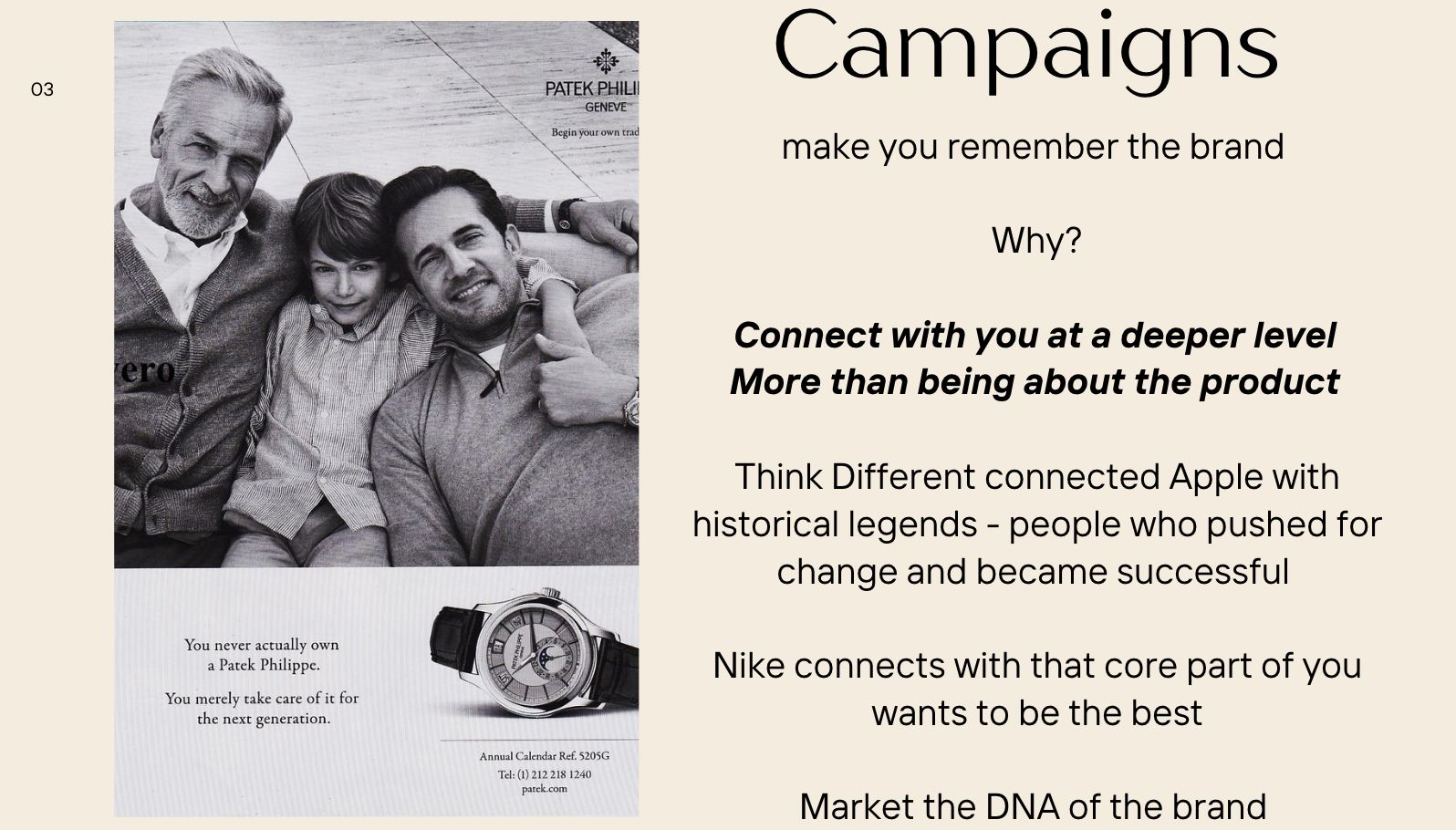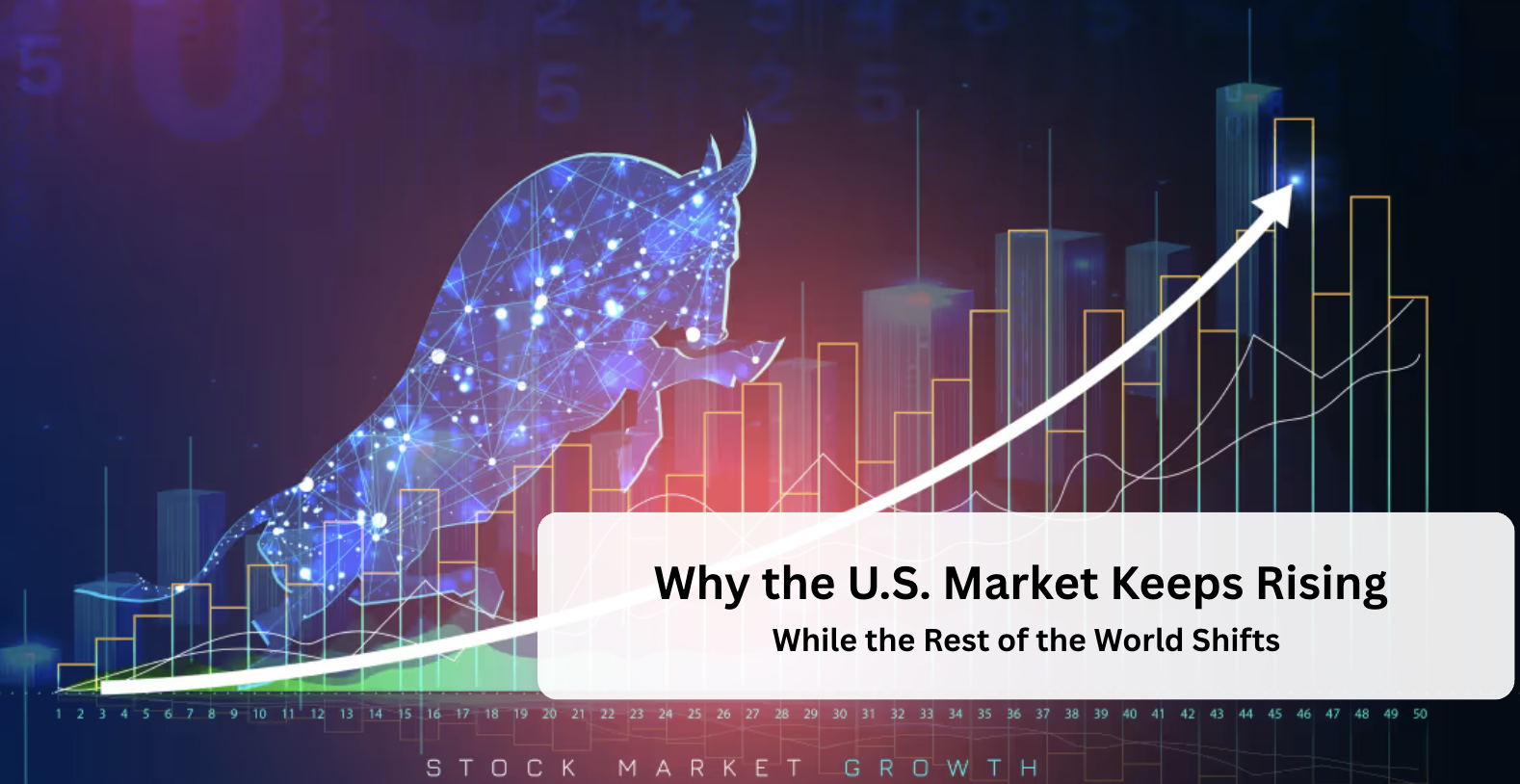
Marketing Series: What Most People Get Wrong About Marketing
This episode of the Marketing Series is designed to challenge everything you’ve been told about marketing — and replace it with a clear, strategic foundation that actually drives growth. We go beyond surface-level tactics to explore the structural role of marketing inside a business: how it shapes product, influences investor perception, and directly impacts valuation.
#MarketingStrategy, #GrowthMarketing, #FounderInsights, #BusinessStrategy, #ProductMarketing, #PaywalledContent, #GoToMarket, #MarketingSeries, #DigitalGrowth, #MarketingForFounders

Marketing Series (Preview) |What Most People Get Wrong About Marketing
Welcome to a special preview from our Marketing Series — a deep dive into the strategic side of marketing that rarely gets discussed publicly.
This short segment introduces a broader episode available exclusively to members of pallavisehgal.com, where we unpack how marketing has evolved beyond ads and campaigns, and why mastering it is core to scaling any modern business.
🔒 In the full video (available to members):
The biggest myths in marketing (and what they cost you)
The real difference between growth and performance marketing
How strategy, brand, and product intersect
Metrics that investors actually care about
Building sustainable GTM plans (not just buzzwords)
👉 Watch the full episode here: https://www.pallavisehgal.com/
🔑 Membership required. Sign up to unlock all premium content, case studies, and founder-focused strategy insights.

Luxury Watches in 2025 | Navigating the Industry Downturn
This is a consolidated overview of the luxury watch sector in 2025, offering key insights into how the industry is navigating a broader downturn in the global luxury market. From changing consumer sentiment to shifts in global demand and strategic moves by top watchmakers, these videos provide a comprehensive look at the challenges and opportunities shaping the watch industry today. Ideal for investors, analysts, collectors, and anyone interested in the intersection of craftsmanship, brand heritage, and evolving market dynamics.
#luxurywatches, #watchindustry, #2025trends, #luxurysector, #swisswatches, #horology, #watchcollecting, #luxurybrands, #marketinsights, #watchnews, #downturn2025, #consumertrends, #highendwatches, #luxurywatchmarket, #globalretail

Trading Floors Up, Deal Rooms Down: Investment Banking’s Longest Slump in a Decade
Wall Street’s reliance on trading revenue has reached a new extreme. Investment banking has now underperformed for 14 consecutive quarters—its longest losing streak in over a decade. What this means for the industry, investors, and the future of dealmaking.
#WallStreet, #InvestmentBanking, #TradingRevenue, #MergersAndAcquisitions, #CapitalMarkets, #IPO, #EquityMarkets, #GoldmanSachs, #JPMorgan, #BankofAmerica, #MorganStanley, #FinancialMarkets, #BankingIndustry, #DealFlow, #MarketVolatility

Costco vs. Lululemon | When a Lawsuit Becomes a Marketing Win
What happens when a premium brand sues a beloved retailer over lookalikes—and ends up giving them free marketing instead? This post unpacks the ongoing lawsuit between Lululemon and Costco over the ABC pants, Scuba hoodies, and Define jackets—and explores how Costco turned the legal heat into a viral win. It also examines the tension between brand protection and embracing dupe culture in today’s price-sensitive, algorithm-driven retail landscape.
#BrandStrategy, #RetailMarketing, #Costco, #Lululemon, #DupesCulture, #IntellectualProperty, #MarketingStrategy, #ConsumerBehavior

Agentic Coding Meets Vibe Coding | How AI Is Rewriting Software Development
AI is no longer just accelerating development — it’s changing the entire role of the developer. With agentic coding, autonomous AI agents can now write, debug, and deploy code end-to-end. At the same time, vibe coding is empowering teams to create software with plain English prompts.
From Google’s $2.4B Windsurf deal to Devin, Cursor, and Vanguard’s internal experiments — the software stack is being rebuilt around intelligent, self-directed systems.
The result? Smaller teams, faster prototypes, and engineers who act more like curators and problem-solvers than traditional coders.
The question isn’t when this will hit the enterprise. It already has.
#agenticcoding, #vibecoding, #generativeAI, #AIagents, #softwaredevelopment, #deepmind, #windsurf, #openai, #microsoft, #futureofwork, #aiforbusiness, #enterpriseAI, #devtools, #automation, #innovation

Google pays $2.4 Bn to License Tech of Windsurf | Another Acquihire Chapter in the AI Talent Wars
Google has agreed to pay approximately $2.4 billion to license technology from AI coding startup Windsurf and hire its CEO along with a small number of employees. The deal, structured as a non-exclusive licensing agreement rather than an acquisition, follows the collapse of earlier talks for OpenAI to acquire Windsurf for $3 billion. That deal fell apart due to Microsoft—OpenAI’s largest investor—objecting to terms that would have denied it access to Windsurf’s IP.
The move highlights growing tensions between OpenAI and Microsoft and underscores the intensifying competition among tech giants to secure top AI talent through acquihire-style deals. Most Windsurf employees will remain at the startup, while the new Google hires will join DeepMind to work on agentic coding tools.
#AI, #DeepMind, #Google, #OpenAI, #Microsoft, #Windsurf, #Acquihire, #TalentWar, #GenerativeAI, #TechNews

The New Phase of Global Economy | The Era of Economic Nationalism
Governments across the U.S., China, and Europe are shifting toward financial repression—using policy to steer capital toward national priorities instead of leaving it to market forces. This new wave of financial nationalism is reshaping global capital flows, signaling the end of liberalized finance and the rise of state-led economic strategy.
#FinancialRepression, #CapitalFlows, #EconomicPolicy, #Geopolitics, #GlobalEconomy, #USPolicy, #ChinaEconomy, #EuropeFinance, #StateCapitalism, #InvestmentStrategy, #MacroTrends, #MartinSandbu, #PolicyShift, #FinancialMarkets

Why the U.S. Market Keeps Rising While the Rest of the World Shifts
Despite political uncertainty, rising deficits, and global market shifts, U.S. stocks continue to rise. In this video, we break down why the U.S. market remains resilient in 2025—driven by corporate buybacks, retail investor momentum, and the booming AI narrative. But beneath the optimism lie real risks. Is this true strength, or just calm before the correction?
#USmarkets, #AIboom, #retailinvestors, #stockmarket2025, #economicoutlook, #capitalmarkets, #macroeconomy, #growthstrategy, #investing, #tariffs, #productivity, #deficitspending, #corporateearnings, #capitalcompass, #markettrends

Hedge Funds Enter the Private Credit Arena | Opportunity or Overreach?
Hedge funds are moving beyond liquid markets — and into the booming world of private credit. In this video, we break down why major players like Millennium, Point72, and Third Point are launching new private credit strategies, what’s fueling this shift, and whether they can compete with established giants like Apollo and Blackstone.
#hedgefunds, #privatecredit, #millenniummanagement, #point72, #thirdpoint, #danloeb, #stevecohen, #alternativeassets, #apolloglobal, #blackstone, #assetmanagement, #institutionalinvesting, #creditmarkets, #financialstrategy, #capitalmarkets, #fundraising, #investmentnews, #blueowl, #cerberus, #privateequity, #youtubeinvesting, #marketanalysis, #capitalallocation, #creditfunds

Meta Seeks $29B in Private Capital for AI Data Centers
Meta is raising $29 billion to fund its AI data center expansion—and it’s turning to private credit giants like Apollo, Brookfield, KKR, Carlyle, and Pimco instead of traditional banks. In this video, we break down the structure of the deal, what it means for Meta’s AI ambitions, and why private capital is becoming the go-to solution for big tech’s infrastructure needs. We also explore how these off-balance-sheet financings work and why they’re reshaping the future of corporate funding. If you’re tracking the intersection of private equity, AI, and large-scale tech infrastructure—this one’s for you.
#Meta, #AI, #PrivateCredit, #Apollo, #KKR, #Brookfield, #Pimco, #Carlyle, #AIInfrastructure, #DataCenters, #MarkZuckerberg, #ScaleAI, #OpenAI, #VentureCapital, #PrivateEquity, #CapitalCompass, #TechStrategy, #FundingStrategy, #SPV, #JointVenture, #OffBalanceSheet, #CorporateFinance, #AIInvesting, #TechNews, #FinancialStrategy, #Llama4, #GenerativeAI, #InstitutionalCapital, #AlternativeInvesting

Case Study | Ferragamo & Tod’s - When Heritage Survives but Growth Stalls
In luxury, preserving your heritage is critical — but it’s not the whole game. Ferragamo and Tod’s are two of Italy’s most respected names, both rooted in artisanal excellence and family ownership. They haven’t lost their identity — but they’re struggling to stay culturally and commercially relevant in today’s fashion landscape.
In this episode of When Growth Goes Too Far, we explore why heritage alone isn’t enough. From Ferragamo’s quiet years and creative reinvention under Maximilian Davis to Tod’s challenge of building resonance beyond the Gommino loafer, this is a story of tradition, transition, and the race for relevance.
#Ferragamo, #Tods, #HeritageBrands, #LuxuryStrategy, #QuietLuxury, #MaximilianDavis, #Craftsmanship, #FamilyOwnedBrands, #ItalianLuxury, #BrandRelevance, #CapitalCompass, #FashionCaseStudy, #GrowthVsLegacy

Case Study | Cerruti 1881 - How Italian Refinement Got Lost in Global Expansion
Cerruti 1881 was once the epitome of modern Italian elegance — blending soft tailoring with Parisian sophistication. Founded by Nino Cerruti, the brand stood for quiet power, refined menswear, and timeless design. But after a series of ownership changes and aggressive global expansion efforts, its identity began to fade.
In this episode of When Growth Goes Too Far, we explore how a brand built on balance and restraint was slowly diluted by the pressures of scale, licensing, and short-term commercial ambitions.
#Cerruti1881, #HeritageBrands, #LuxuryBusiness, #FashionStrategy, #CreativeDirection, #MenswearHeritage, #BrandIdentity, #LicensingModel, #PrivateEquity, #GrowthVsLegacy, #CapitalCompass, #CaseStudy, #NinoCerruti, #casestudy, #casestudycerruti

Case Study | Dr. Martens - From Subculture Symbol to Scaled Footwear Giant
Dr. Martens started as a working-class boot and became a global symbol of rebellion — worn by punks, rockers, and subcultures across decades. But today, it’s a publicly traded brand, scaled through private equity-backed expansion, international store rollouts, and hype-driven drops.
In this episode of When Growth Goes Too Far, we explore how Dr. Martens achieved financial success under Permira and through its IPO — but also how scaling a subcultural icon can create tension between cultural authenticity and commercial performance.
#DrMartens, #HeritageBrands, #FootwearStrategy, #BrandGrowth, #PrivateEquity, #IPO, #SubcultureToMainstream, #FashionBusiness, #CapitalCompass, #CaseStudy, #BrandIdentity, #GrowthVsLegacy

Case Study | Brooks Brothers - When Expansion Outpaces Identity
Brooks Brothers is America’s oldest apparel brand — a name once synonymous with elegance, professionalism, and East Coast heritage. But after years of rapid expansion, licensing, and outlet retailing, the brand slowly lost the very identity that made it iconic.
In this episode of When Growth Goes Too Far, we explore how Brooks Brothers went from dressing presidents and executives to filing for bankruptcy in 2020. From ownership changes to evolving consumer preferences, this case study highlights the risks of prioritizing scale over soul.
#BrooksBrothers, #HeritageBrands, #LuxuryRetail, #BrandStrategy, #RetailBankruptcy, #OutletRetail, #LicensingModel, #AmericanFashion, #GrowthVsLegacy, #CapitalCompass, #CaseStudy, #FashionHistory, #casestudy, #casestudybrooksbrothers

Case Study | Roberto Cavalli - From Runway Excess to Brand Reset
Roberto Cavalli once defined high-octane glamour — bold prints, exotic textures, and maximalist confidence. But after years of over-licensing, creative turnover, and private equity restructuring, the brand lost its edge and filed for creditor protection in 2019.
In this episode of When Growth Goes Too Far, we explore how the Cavalli brand expanded aggressively into everything from children’s wear to luxury clubs — and how this diluted its core identity. Now owned by Dubai-based Damac Group, Cavalli is attempting a revival that’s as much about lifestyle and real estate as it is about fashion.
#RobertoCavalli, #HeritageBrands, #LuxuryFashion, #BrandDilution, #PrivateEquity, #FashionCaseStudy, #BrandReset, #LicensingModel, #GrowthVsLegacy, #FashionBusiness, #CapitalCompass, #Maximalism, #FaustoPuglisi, #casestudy, #casestudyrobertocavalli

Donna Karan | From New York Powerhouse to a Brand Without a Home
Donna Karan built one of the most influential American fashion brands of the 20th century — rooted in real women’s lives and modern New York energy. From her iconic “Seven Easy Pieces” concept to the global success of DKNY, the brand defined an era.
But as the business scaled, went public, was acquired by LVMH, and eventually sold to G-III, the brand’s identity became fragmented. In this episode, we explore how the pressure to grow — through licensing, mass distribution, and commercial repositioning — diluted a once-distinctive voice in American fashion.
#DonnaKaran, #DKNY, #HeritageBrands, #FashionStrategy, #BrandIdentity, #LuxuryBusiness, #CreativeDirection, #GrowthVsLegacy, #LicensingModel, #AmericanFashion, #CapitalCompass, #CaseStudy

Case Study - Halston | The Rise, Overexposure, and Identity Loss of an American Icon
What happens when a legendary brand grows too fast without a clear strategy? In this case study, we explore the story of Halston — once the face of American fashion, now a cautionary tale of overexposure, misaligned licensing, and fragmented relaunches. From Studio 54 fame to modern retail confusion, Halston’s journey offers key lessons on the risks of growth without creative clarity.
#Halston, #BrandStrategy, #LuxuryBusiness, #HeritageBrands, #PrivateEquity, #FashionMarketing, #CaseStudy, #BrandIdentity, #Licensing, #CreativeLeadership, #CapitalCompass

Can an Auto Executive Revive a Luxury Giant? Luca de Meo’s High-Stakes Move to Kering
De Meo faces a high-stakes task: restoring Gucci’s relevance, cutting debt, and rationalizing Kering’s portfolio—all without diluting its luxury brand equity. While not a “plug and play” choice, his outsider perspective may be just what Kering needs to stabilize and grow—provided he navigates the fashion world’s nuances with sensitivity and speed.

Gold Overtakes Euro as Global Reserve Asset
In 2024, gold overtook the euro to become the second-largest global reserve asset, accounting for 20% of official reserves—behind only the US dollar at 46%, according to the European Central Bank. This shift was driven by record central bank purchases, with over 1,000 tonnes acquired annually since 2022, and a surge in gold prices (up 30% last year and another 27% so far in 2025). Countries like China, India, Turkey, and Poland have led this buying spree. The move reflects rising geopolitical risk, de-dollarisation efforts, and concerns over US financial sanctions, positioning gold as a strategic hedge in the evolving global monetary system.
#GoldReserves, #CentralBanks, #GlobalEconomy, #DeDollarisation, #ECB, #Geopolitics, #SafeHaven, #Gold, #MonetaryPolicy, #DollarDominance